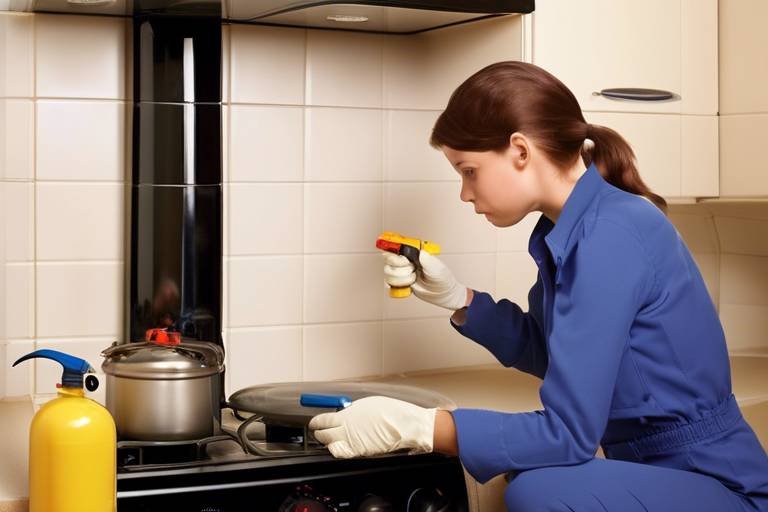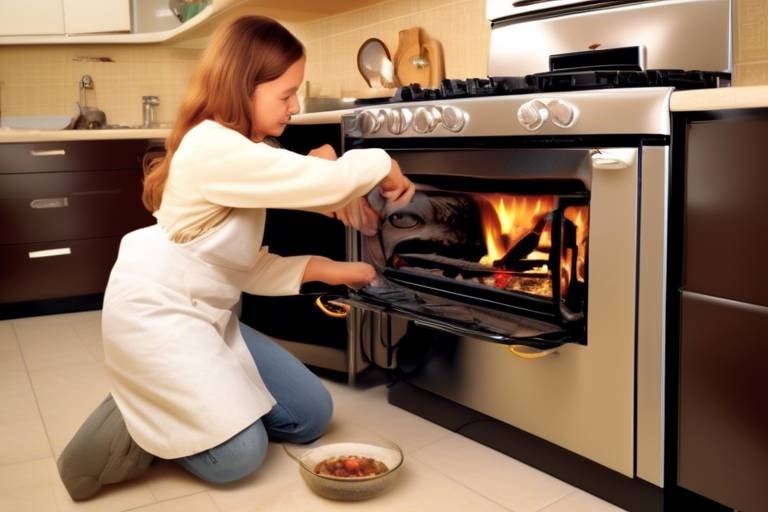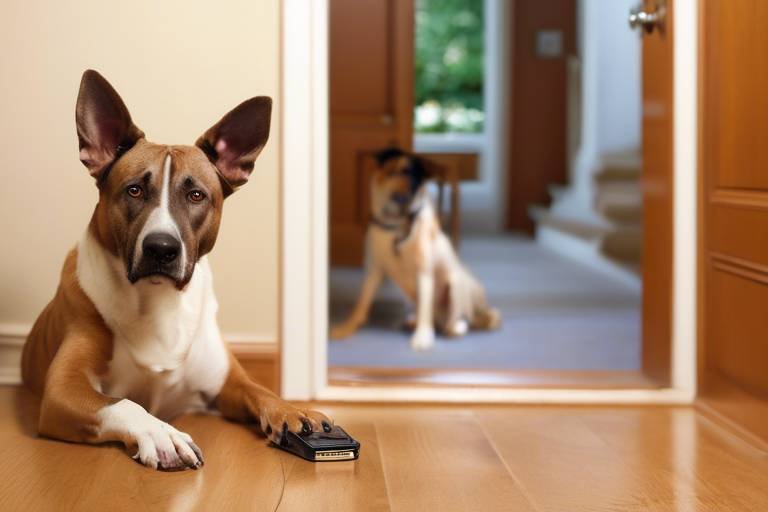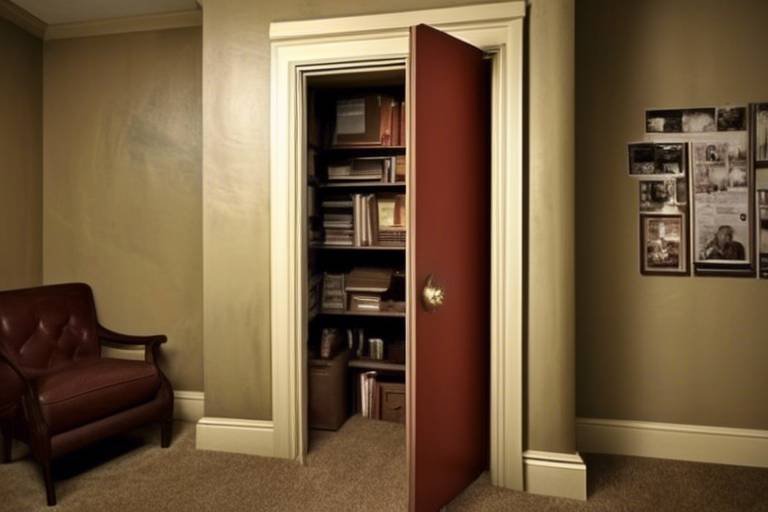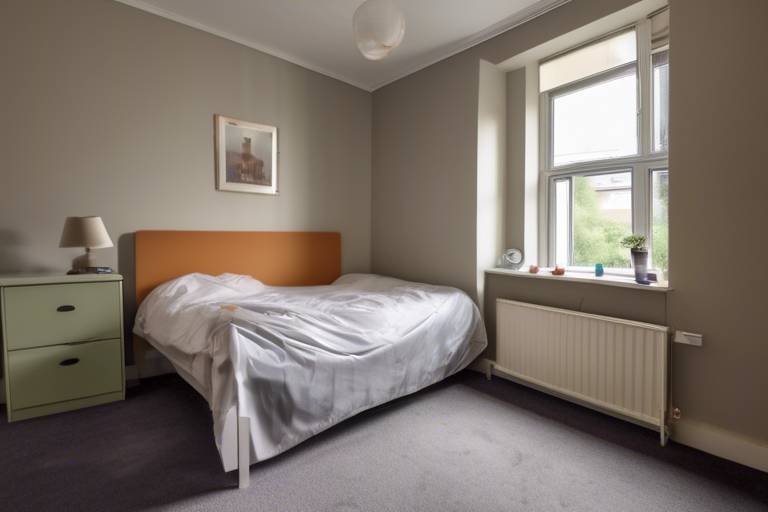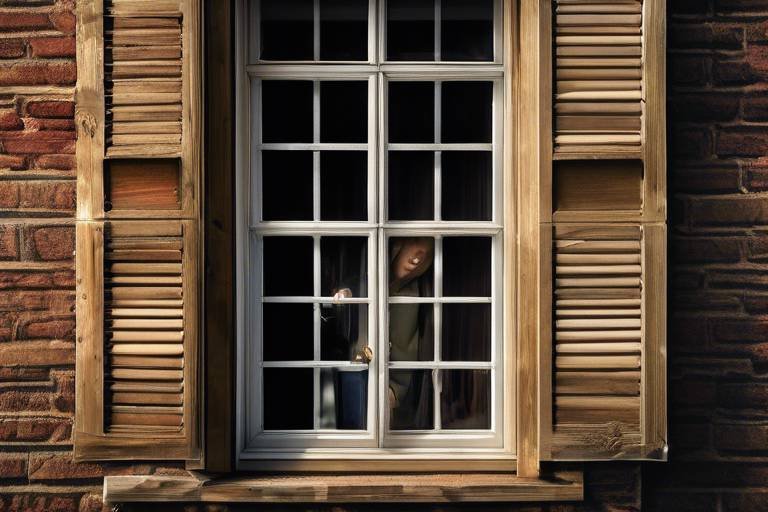A Comprehensive Guide to Home Safety for Single Women
In today's world, home safety is not just a luxury; it's a necessity. For single women, feeling secure in their own living space is paramount. Whether you're a busy professional, a student, or simply someone who enjoys their independence, knowing how to protect yourself and your home can provide peace of mind. This article dives deep into essential tips and strategies tailored specifically for single women aiming to enhance their home safety. From understanding the latest security systems to implementing effective personal safety practices, we've got you covered. So, let's embark on this journey to make your home a fortress of safety and comfort!
A reliable home security system is vital for protecting your living space. With so many options available, it can feel overwhelming to choose the right one. Think of your security system as a digital guardian, always on alert, ready to protect you at a moment's notice. There are various types of systems, including:
- Monitored Systems: These systems send alerts to a monitoring center, which can contact the authorities if necessary.
- Unmonitored Systems: These rely on loud alarms to scare off intruders and alert you or neighbors.
- Smart Home Security: Integrating technology, these systems allow you to monitor your home from anywhere using your smartphone.
When choosing a system, consider factors like your budget, the size of your home, and whether you prefer professional installation or a DIY setup. Remember, the best security system is the one that fits seamlessly into your lifestyle while providing the protection you need.
Implementing personal safety practices can significantly reduce risks. It's about creating habits that keep you safe without making you feel paranoid. For instance, always lock your doors and windows, even when you're home. This simple act can deter potential intruders. Another effective strategy is to be aware of your surroundings. When you’re out and about, keep your phone out of sight and your head up. It’s easy to get lost in a screen, but being present can make all the difference.
A well-thought-out safety plan can help you respond effectively in emergencies. Think of it as your personal roadmap for safety. Here’s how to create one:
- Identify potential risks: Consider what could happen in your area, from natural disasters to break-ins.
- Establish a communication strategy: Decide how you will contact friends or family in case of an emergency.
- Practice your plan: Run through scenarios with trusted friends to ensure everyone knows what to do.
Maintaining a list of emergency contacts is crucial. This list should include local authorities, trusted friends, and family members. Keep this list handy—perhaps on your fridge or saved in your phone—so you can access it quickly when needed. Remember, in a crisis, every second counts!
Designating a safe room in your home can provide security during a crisis. This space should be equipped with essential supplies, such as:
- First aid kit
- Flashlight and batteries
- Non-perishable food and water
- Communication tools, like a charged phone or a walkie-talkie
Having a safe room gives you a sense of control, knowing you have a designated area to retreat to if needed.
Regular home maintenance can prevent safety hazards. Just like you wouldn’t ignore a warning light on your car, don’t overlook signs of wear and tear in your home. Key areas to inspect include:
- Locks and deadbolts on doors and windows
- Smoke alarms and carbon monoxide detectors
- Outdoor lighting, especially near entry points
By keeping these elements in check, you create a safer environment for yourself.
Being aware of your surroundings and community can enhance safety. Engage with your neighbors; they can be your first line of defense. Join local community groups or social media pages to stay informed about local safety issues. When you know what’s happening in your neighborhood, you can take proactive steps to protect yourself.
Establishing a network of trusted friends and neighbors can provide additional security. Think of it as your personal safety net. Regularly check in with your neighbors and offer to help each other out; this builds trust and creates a sense of community. A simple chat over the fence can lead to a stronger bond that enhances everyone’s safety.
Technology can play a vital role in home safety. There are numerous apps and devices designed to enhance personal safety and home security for single women. From smart doorbells that let you see who's at your door to personal safety apps that alert friends or authorities in emergencies, technology is your ally. Explore options that suit your lifestyle and make you feel more secure.
Q: What should I do if I feel unsafe in my neighborhood?
A: Trust your instincts. If something feels off, take action. Consider reaching out to local authorities or community watch groups for support.
Q: How often should I check my smoke alarms?
A: It's recommended to check your smoke alarms at least once a month and replace the batteries at least once a year.
Q: What is the best way to secure my windows?
A: Use window locks, and consider adding security film or window sensors for additional protection.

Understanding Home Security Systems
When it comes to safeguarding your home, a reliable home security system is like having a trusty sidekick—always there to protect you. But with so many options available, how do you choose the right one for your unique needs? Let’s break it down together!
First, you need to understand the different types of security systems on the market. They can generally be divided into two main categories: monitored systems and unmonitored systems.
| Type of Security System | Description | Pros | Cons |
|---|---|---|---|
| Monitored Systems | These systems are connected to a central monitoring station that alerts authorities in case of an emergency. |
|
|
| Unmonitored Systems | These systems rely on local alarms and alerts. You handle any emergencies yourself. |
|
|
Now that you know the types, think about what features are most important to you. Do you want video surveillance to keep an eye on your property while you’re away? Or perhaps smart home integration that allows you to control your security system from your smartphone? The beauty of modern technology is that you can customize your system to fit your lifestyle.
Another critical factor to consider is the installation process. Some systems are DIY-friendly, allowing you to set everything up yourself without needing to hire a professional. Others might require expert installation, which can add to the overall cost. It's essential to weigh these options carefully to ensure you’re comfortable with the setup.
Finally, always do your research! Read reviews, compare prices, and ask friends or family for recommendations. You want a security system that not only fits your budget but also gives you peace of mind. After all, investing in your safety is one of the best decisions you can make.
In conclusion, understanding home security systems is the first step in enhancing your home safety. By knowing the types available, the features you need, and the installation process, you can make an informed choice that best suits your lifestyle. So, are you ready to take control of your home security?

Personal Safety Practices
When it comes to personal safety, especially for single women, adopting effective practices can make all the difference in creating a secure home environment. Think of your home as your fortress; every little action you take can fortify your defenses. It's essential to develop habits that not only keep you safe but also empower you to feel confident in your surroundings. So, what are some of these practices? Let’s dive in!
First and foremost, always be aware of your surroundings. This means being present and observant, whether you're walking to your car or just sitting in your living room. You wouldn’t walk through a dark alley with your eyes closed, right? The same principle applies at home. Keep your windows and doors locked, even when you’re inside. It’s a simple yet effective way to deter unwanted visitors. Additionally, consider installing motion-sensor lights around your property. Not only do they illuminate dark areas, but they can also startle any potential intruders.
Another vital practice is to create a routine for your home. For instance, always check that doors are locked before going to bed. You might even want to develop a small checklist to ensure nothing is overlooked. This can include:
- Locking all doors and windows
- Setting your security system (if you have one)
- Turning on outdoor lights
Having a checklist can help you stay organized and focused, preventing you from rushing out the door without taking the necessary precautions.
Furthermore, it’s crucial to inform trusted friends or family about your whereabouts, especially if you’re going out late or traveling alone. This practice not only keeps your loved ones informed but also provides you with an extra layer of accountability. You could even share your location via your smartphone with someone you trust, just in case. Remember, it’s not about being paranoid; it’s about being prepared.
In addition to these practices, consider investing in self-defense training. Knowing how to protect yourself can boost your confidence and provide you with practical skills to handle unexpected situations. Many local community centers offer self-defense classes specifically designed for women. This training can be invaluable, turning you from a potential victim into a powerful defender of your own safety.
Lastly, always trust your instincts. If something feels off, it probably is. Whether it’s a stranger lingering too long outside your home or an unexpected knock at your door, don’t hesitate to take action. This might mean calling a friend, contacting the authorities, or simply not answering the door. Your intuition is a powerful tool, so listen to it!
By implementing these personal safety practices, you can transform your home into a sanctuary of security. Remember, safety is not just about having the right tools; it’s about developing habits and mindsets that prioritize your well-being. So, take charge of your safety today and make your home the secure haven it deserves to be!
Q: What is the most important personal safety practice?
A: Being aware of your surroundings is crucial. Always stay alert and trust your instincts.
Q: Should I invest in a home security system?
A: Yes, a reliable home security system can significantly enhance your safety and peace of mind.
Q: How can I build my confidence in self-defense?
A: Consider taking self-defense classes. They not only teach you techniques but also empower you mentally.

Creating a Safety Plan
Creating a safety plan is like crafting a roadmap for your peace of mind. Imagine navigating through a bustling city without a map; it can be overwhelming and risky. Similarly, having a safety plan in place can help you respond effectively in emergencies, ensuring you know exactly what to do when the unexpected happens. The first step in this journey is to assess your living environment. Take a moment to walk through your home and identify potential risks. Are there areas that are poorly lit? Do you have easy access to emergency supplies? By pinpointing these factors, you can tailor your safety plan to fit your unique situation.
Next, consider establishing clear procedures for various scenarios. For instance, what would you do if you heard an unusual noise outside your home at night? Or if someone knocked on your door unexpectedly? Having predetermined responses can help you stay calm and collected in stressful situations. You might want to include a few essential components in your safety plan:
- Emergency Exits: Identify at least two ways to exit your home quickly in case of fire or another emergency.
- Safe Locations: Designate a safe spot in your neighborhood where you can go if you ever feel threatened.
- Communication Plan: Decide how you will communicate with friends or family during an emergency, whether through phone calls, texts, or social media.
Another crucial element is to practice your plan regularly. Just like fire drills in schools, rehearsing your safety procedures can make a world of difference. You’ll feel more confident and prepared if you ever find yourself in a tricky situation. So, gather your friends or family and run through your plan together. It’s not only a great way to bond, but it also ensures everyone knows what to do.
Additionally, consider keeping a safety kit in your home. This kit should include items like first aid supplies, flashlights, batteries, and any necessary medications. Think of it as your personal safety toolbox, ready to assist you in times of need. You can even organize your safety kit using a simple table to keep track of what you have and what needs to be replenished:
| Item | Quantity | Notes |
|---|---|---|
| First Aid Kit | 1 | Check expiration dates regularly |
| Flashlight | 2 | Keep in different rooms |
| Batteries | Pack of 8 | Ensure they fit your devices |
| Emergency Contact List | 1 | Update regularly |
Finally, always remember that your safety plan is a living document. As your life changes—whether you move to a new home, change jobs, or experience significant life events—your plan should evolve too. Regularly review and update your safety strategies to ensure they remain relevant. Think of it as tuning up your car; keeping everything in check will ensure a smoother ride through life.

Emergency Contacts
When it comes to home safety, having a reliable list of is not just a good idea; it's absolutely essential. Imagine being in a situation where every second counts, and you can't remember the number for local authorities or a trusted friend. Panic can set in, and the last thing you want is to waste precious time looking for contact information. Therefore, it’s crucial to maintain a well-organized list of important numbers that you can easily access in times of need.
Your emergency contacts should include a variety of people and services to ensure that you have comprehensive support. Here’s a quick breakdown of the key categories you should consider:
- Local Authorities: This includes the police, fire department, and emergency medical services (EMS). Having their numbers saved in your phone and written down in a visible location can make a world of difference.
- Trusted Friends and Family: Identify a few close friends or family members who can be contacted in case of an emergency. These individuals should be aware of your safety plan and be ready to assist you if needed.
- Neighbors: Having a good relationship with your neighbors can be incredibly beneficial. They can be your first line of defense if something seems off, and it’s always good to have their contact information handy.
- Local Support Services: This can include shelters, hotlines, or counseling services that can provide assistance during emergencies. Knowing who to call can ease the stress of unexpected situations.
To make this process easier, consider creating a small table or chart that lists these contacts along with their phone numbers. You can keep a printed copy in a visible area of your home, like on the fridge, and have a digital copy saved on your phone. Here’s an example of how you can structure your emergency contact list:
| Contact Type | Name | Phone Number |
|---|---|---|
| Police | Local Police Department | (123) 456-7890 |
| Fire Department | City Fire Services | (123) 987-6543 |
| Emergency Medical Services | Local EMS | (123) 555-0123 |
| Family | Mom | (123) 456-1111 |
| Friend | Best Friend | (123) 456-2222 |
Remember, the key to effective emergency management is preparation. Regularly review and update your emergency contact list to ensure that all information is current. You never know when an emergency might arise, and being prepared can make all the difference. Take a moment today to sit down, jot down those crucial numbers, and feel a little more secure in your home.
Q: Why is it important to have emergency contacts?
A: Emergency contacts provide quick access to help in critical situations, allowing you to respond swiftly and effectively.
Q: How often should I update my emergency contact list?
A: It's a good practice to review and update your list at least every six months or whenever there are significant changes in your life, such as moving or changes in relationships.
Q: Where should I keep my emergency contact list?
A: Keep a printed copy in a visible spot at home, like the fridge, and save a digital version on your smartphone for easy access.

Safe Room Setup
Setting up a safe room in your home is not just about having a physical space; it’s about creating a sanctuary where you can feel secure during a crisis. Think of it as your personal fortress—a place where you can retreat and gather your thoughts when the world outside feels chaotic. But how do you go about establishing this vital area? Let's break it down.
First and foremost, the location of your safe room is crucial. Ideally, it should be situated in an interior part of your home, away from windows and doors. Basements or central rooms, like a large closet or pantry, can serve as excellent options. You want a space that is not only hidden but also easy to access quickly. Consider this: if you had to get to your safe room in a matter of seconds, would you know the quickest route? Planning this out in advance can make all the difference.
Next, equip your safe room with essential supplies. Here’s a quick checklist of items you might want to include:
- First Aid Kit: Accidents can happen, and having a first aid kit on hand is a must.
- Communication Devices: Keep a charged phone or a two-way radio to stay connected with the outside world.
- Emergency Food and Water: Non-perishable snacks and bottled water can sustain you during an unexpected lockdown.
- Flashlight and Batteries: Power outages can occur during emergencies, so have a reliable light source ready.
- Personal Defense Tools: Depending on your comfort level, consider having pepper spray or other self-defense items available.
Moreover, it’s essential to have a way to secure your safe room from unauthorized entry. A simple lock on the door can provide an extra layer of protection. If you want to take it a step further, consider installing a deadbolt or even a smart lock that can be controlled remotely. This way, you can ensure that your safe room remains a sanctuary, even when you’re not physically there.
Lastly, practice makes perfect. Just as you would rehearse a fire drill, take some time to familiarize yourself with your safe room. Make sure you know how to access it quickly and what to do once you’re inside. Share your plan with trusted friends or family members so they know where to find you in case of an emergency. Remember, a well-prepared safe room is not just a space; it’s a mindset of safety and security.
Q: What should I include in my safe room?
A: Essential items include a first aid kit, communication devices, emergency food and water, a flashlight, and personal defense tools.
Q: Can I use any room in my house as a safe room?
A: Ideally, choose an interior room that is away from windows and doors, like a basement or a large closet.
Q: How can I secure my safe room?
A: Use a solid door with a lock, and consider installing a deadbolt or a smart lock for added security.
Q: How often should I check the supplies in my safe room?
A: Regularly check your supplies—ideally every few months—to ensure everything is up to date and functional.

Home Maintenance for Safety
When it comes to ensuring your home is a safe haven, regular maintenance is not just a chore—it's a necessity. Think of your home as a protective shell; if there are cracks or holes, it can’t keep you safe. By taking the time to inspect and maintain various aspects of your home, you can significantly reduce the risk of accidents and enhance your overall security. So, what should you focus on? Let's dive into some crucial areas that deserve your attention.
First and foremost, check your locks regularly. This might sound simple, but a malfunctioning lock can be an open invitation to unwanted guests. Make it a habit to inspect all doors and windows to ensure they lock securely. If you find any that are sticking or refusing to lock, consider replacing them. Additionally, you might want to think about upgrading to smart locks, which offer enhanced security features and remote access.
Another vital area is your lighting. A well-lit home is a less attractive target for intruders. Ensure that all entry points, including porches and garages, are adequately illuminated. Motion sensor lights are a fantastic investment as they automatically turn on when someone approaches, adding an extra layer of security. Remember, darkness can be your enemy, so keep those lights shining bright!
Additionally, don’t overlook your smoke and carbon monoxide detectors. These devices are your first line of defense against fire and toxic gas. Check the batteries monthly and replace the units every ten years. It’s a small task that can have life-saving consequences. If you’re tech-savvy, consider investing in smart detectors that send alerts directly to your phone, keeping you informed even when you’re not at home.
Regularly inspecting your home’s exterior is also essential. Look for any signs of wear and tear, such as cracks in the foundation, peeling paint, or damaged gutters. These issues can lead to more significant problems if left unaddressed. For instance, a small crack can allow water to seep in, causing mold growth and compromising your indoor air quality. Schedule seasonal checks to ensure everything is in tip-top shape.
Furthermore, consider creating a home maintenance checklist to keep track of what needs attention. This could include tasks like:
- Checking and replacing air filters
- Inspecting plumbing for leaks
- Cleaning out gutters
- Testing security systems
- Updating your emergency kit
By maintaining a proactive approach, you not only enhance your safety but also increase the longevity of your home. Remember, a little effort goes a long way in creating a secure environment. Now, let’s shift gears and talk about how you can stay aware of your neighborhood, which is equally important for your safety.
Q: How often should I check my home security systems?
A: It's recommended to check your home security systems at least once a month to ensure everything is functioning properly. Regular tests can help you identify any issues early on.
Q: What are some signs that my locks need replacing?
A: If your locks are difficult to turn, show signs of rust, or if you’ve lost a key, it’s time to consider replacing them. It's better to be proactive than reactive!
Q: How can I make my home more energy-efficient while maintaining safety?
A: Installing energy-efficient windows and using LED lights can save you money on energy bills while also improving your home’s security through better insulation and lighting.
Q: Is it necessary to have a safe room?
A: While not mandatory, having a designated safe room can provide peace of mind. It serves as a secure place to retreat to in case of emergencies.

Neighborhood Awareness
When it comes to home safety, is like having a secret weapon in your arsenal. Imagine walking through your community with a heightened sense of awareness, almost like a superhero with a sixth sense. By being attuned to your surroundings, you can spot potential dangers before they escalate. Start by familiarizing yourself with your neighborhood—know the streets, the local shops, and, most importantly, the people. Who are your neighbors? Do they seem friendly? Are there any suspicious activities that you notice regularly? These observations can make a world of difference.
Engaging with your community not only helps you stay informed but also creates a sense of belonging. Attend neighborhood meetings or community events; this is your opportunity to connect with others and discuss safety concerns. You might just find that your neighbors share similar worries, and together, you can brainstorm solutions. Think of it as building your own neighborhood watch—a group of vigilant eyes looking out for one another.
Another effective way to enhance your neighborhood awareness is by utilizing technology. There are numerous apps designed to keep you informed about local safety issues. For instance, platforms like Nextdoor allow residents to share updates about suspicious activities, lost pets, or even community events. This kind of communication can be invaluable. Just imagine receiving a notification about a recent incident in your area, giving you the chance to adjust your routine accordingly.
Moreover, don’t underestimate the power of social media. Join local Facebook groups or follow community pages on platforms like Instagram or Twitter. These digital spaces often provide real-time updates and can alert you to any safety concerns in your area. It’s like having a virtual neighborhood watch right at your fingertips!
As you engage with your community, consider establishing a support network. This could be as simple as exchanging phone numbers with neighbors or creating a group chat for quick communication. In case of an emergency, having trusted contacts nearby can be a lifesaver. Plus, it fosters a sense of camaraderie that can make your neighborhood feel more like home.
Lastly, always trust your instincts. If something feels off, don’t hesitate to reach out to local authorities. It’s better to be safe than sorry. Remember, your safety is a priority, and being aware of your surroundings is the first step towards safeguarding it.
Q: How can I get to know my neighbors better?
A: Start by introducing yourself when you see them outside. Attend community events or organize a small gathering to break the ice.
Q: What should I do if I notice suspicious activity?
A: Trust your instincts. If something seems off, report it to local authorities. It’s always better to be safe and let them investigate.
Q: Are there any apps specifically for neighborhood safety?
A: Yes! Apps like Nextdoor and Citizen provide updates about local incidents and allow you to communicate with your neighbors.
Q: How can I create a support network in my neighborhood?
A: Start by connecting with neighbors, exchanging contact information, and establishing a group chat for emergencies and safety updates.

Building a Support Network
Establishing a strong support network is not just a safety measure; it’s a vital part of creating a nurturing environment in which you can thrive. Think of your support network as your personal fortress; it’s built on trust, shared experiences, and mutual assistance. For single women, having a reliable group of friends, family, and neighbors can significantly enhance your sense of security and well-being. But how do you go about building this network? It starts with connection.
Begin by reaching out to those around you. If you live in an apartment building or a neighborhood, introduce yourself to your neighbors. A friendly chat over the fence or a casual coffee can lay the groundwork for a supportive relationship. You might be surprised at how many people are eager to connect. Sharing your experiences and listening to theirs can foster a sense of community. After all, a neighbor who knows you is more likely to look out for you, and vice versa.
Additionally, consider joining local groups or clubs that align with your interests. Whether it’s a book club, a fitness class, or a community service group, these gatherings not only enrich your life but also expand your network. Engaging in activities you love can help you meet like-minded individuals who may become part of your support system. The more connections you make, the more resources you have at your disposal.
Another effective way to build a support network is through technology. Social media platforms and community apps can connect you with local groups focused on safety, wellness, or even hobbies. For instance, platforms like Nextdoor or Facebook Groups can help you find local events or safety initiatives in your area. Just remember to exercise caution when meeting people online; always prioritize safety and meet in public places initially.
Once you’ve established your network, maintaining those relationships is crucial. Regularly check in with your contacts, share updates about your life, and offer help when you can. This reciprocal relationship strengthens bonds and ensures that your support network remains robust. Consider organizing occasional gatherings, such as potlucks or game nights, to keep the connection alive. After all, a network is only as strong as the effort you put into it.
In summary, building a support network is an ongoing process that requires effort and commitment. By fostering connections with neighbors, joining local groups, utilizing technology, and maintaining relationships, you can create a safety net that not only enhances your home security but also enriches your life. Remember, you’re not alone in this journey. With the right support, you can navigate the world with confidence and peace of mind.
- How can I start building my support network? Begin by introducing yourself to neighbors and joining local clubs or groups that interest you.
- What if I’m shy or introverted? Start small with one-on-one interactions, and gradually expand your connections as you become more comfortable.
- How can technology help in building a support network? Use social media and community apps to connect with local groups and events that align with your interests.
- What should I do if I feel unsafe in my neighborhood? Reach out to your support network for advice and consider discussing safety concerns with local authorities.

Using Technology for Safety
In our fast-paced world, technology has become an essential ally in enhancing safety, especially for single women living alone. It's like having a personal bodyguard that fits right in your pocket! From smart home devices to safety apps, the options available today can significantly bolster your peace of mind. But how do you know which technologies are truly effective? Let's dive into some of the most impactful tools that can help safeguard your home and personal safety.
First off, consider investing in smart security systems. These systems not only offer traditional features like alarms and cameras but also integrate with your smartphone, allowing you to monitor your home from anywhere. Imagine being at work and receiving a real-time alert on your phone if someone approaches your front door. Many modern systems even allow you to interact with visitors using two-way audio, so you can communicate without opening the door. This level of control can be incredibly empowering.
Another fantastic technological advancement is the use of personal safety apps. These apps can provide a range of services, from location tracking to emergency alerts. For instance, apps like SafeTrek allow you to hold down a button while walking alone; if you release it without entering your PIN, local authorities are notified of your location. It's like having a virtual friend walking with you, ready to call for help if needed. Other apps, such as bSafe, let you set up a network of trusted contacts who can be alerted with just a tap, making it easy to call for help when you're in a tight spot.
Moreover, don't overlook the power of smart lighting. Installing motion-sensor lights around your home can deter potential intruders by illuminating dark areas automatically. This not only enhances your safety but also makes your home more inviting. Picture this: you’re returning home late at night, and as you approach your driveway, the lights flicker on, creating a well-lit path. It’s a simple yet effective way to feel more secure.
When it comes to personal safety devices, consider carrying a smart personal alarm. These compact devices can emit a loud sound when activated, drawing attention to your situation and potentially scaring off an assailant. Plus, many of them come with GPS tracking features that can help authorities locate you quickly. It’s like having a safety net that you can carry with you wherever you go.
To wrap things up, technology can transform the way we think about safety. By leveraging these tools, single women can create a comprehensive safety plan that not only protects their homes but also empowers them in their daily lives. Remember, the goal is to feel secure and confident in your environment, and with the right technology, that’s entirely achievable.
- What are the best smart security systems for home safety?
Some popular options include Ring, Arlo, and Nest, each offering unique features tailored to different needs. - How can personal safety apps enhance my security?
They provide quick access to emergency services, allow location sharing with trusted contacts, and can alert authorities if you're in danger. - Are smart lighting systems worth the investment?
Absolutely! They not only deter intruders but also improve visibility around your home, enhancing overall safety.
Frequently Asked Questions
- What are the most effective home security systems for single women?
When it comes to home security systems, options like smart doorbells, motion sensor lights, and comprehensive alarm systems are among the best. These systems not only deter potential intruders but also provide peace of mind. It's essential to evaluate your specific needs, such as your home's layout and your lifestyle, to choose the right system that fits your budget and security requirements.
- How can I improve my personal safety at home?
Improving personal safety at home involves adopting simple yet effective practices. Always lock your doors and windows, use peepholes before opening the door, and avoid sharing personal information with strangers. Additionally, consider installing security cameras and maintaining good lighting around your property. Remember, being aware of your surroundings and trusting your instincts can go a long way in ensuring your safety.
- What should I include in my emergency contacts list?
Your emergency contacts list should include local authorities, such as the police and fire department, trusted friends or family members, and emergency services. It's also wise to have contacts for nearby neighbors who can provide assistance in case of an emergency. Keep this list in a visible place, like on your fridge or saved in your phone, so you can access it quickly when needed.
- How do I create a safe room in my home?
Creating a safe room involves designating a secure area in your home where you can retreat during emergencies. This room should have a sturdy door, minimal windows, and a reliable means of communication, such as a phone or a two-way radio. Stock it with essential supplies like water, non-perishable food, a flashlight, and a first-aid kit. Make sure to practice your escape plan and familiarize yourself with the safe room's layout.
- What maintenance tasks should I prioritize for home safety?
Regular home maintenance is crucial for safety. Focus on checking smoke detectors, inspecting locks and windows, and ensuring that your electrical systems are up to code. Additionally, keep your yard well-maintained to eliminate hiding spots for potential intruders and ensure that your outdoor lighting is functional. Regularly inspect your home for any hazards, such as loose railings or slippery floors, to prevent accidents.
- How can I stay informed about neighborhood safety issues?
Staying informed about neighborhood safety can be achieved by engaging with local community groups, attending neighborhood watch meetings, and following local news outlets. Social media platforms can also be useful for connecting with neighbors and sharing information about safety concerns. Building relationships with your neighbors can create a supportive network that helps everyone stay vigilant.
- What technology can enhance my home safety?
There are numerous technologies available to boost home safety. Consider using smart home devices like security cameras, smart locks, and motion sensors that can be monitored via your smartphone. Additionally, personal safety apps can provide features like emergency alerts or location tracking. These tools not only enhance your security but also make it easier to stay connected with your support network.





